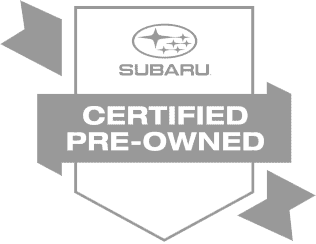

The gasoline isn't the only vital fluid that makes your car's engine run. Another is coolant, also known as antifreeze, but thankfully you don't need to fill up with coolant ever so often at the coolant station. However, there are a few things you should know about how the coolant works in your car and what regular maintenance is required for the cooling system. Get some critical information about your car's cooling system below from the pros at the Capitol Subaru service department.

4. What Is Coolant/Antifreeze?
Most people today call it coolant, and that's exactly what it does: keeps the engine cool. By recirculating liquid coolant through the engine, it draws heat away from the engine block and the moving parts inside. That heat is then exchanged with the outside air at the radiator as you drive along. The radiator is positioned behind the vehicle's front grill, so it gets lots of airflow. The coolant inside the radiator cools back down before it's sent back to the engine to repeat the process.
Modern antifreeze is usually pre-mixed, though some coolant has to be blended with water. Antifreeze is really just water mixed with some ethylene glycol or propylene and anti-corrosion additives to help keep the system from rust build-up. It's usually green, blue or more rarely pink or orange in color.

3. How Long Does Antifreeze Last In My Subaru?
Your Subaru vehicle was pre-filled from the factory with Subaru Super Coolant, which has been specially engineered for exceptionally long life. The recommended replacement interval is after 11 years or 137,500 miles of driving! Thereafter, you'll get the best reliability and longevity from your vehicle with regular coolant replacement every 6 years of 75,000 miles.
2. Should I Check My Coolant Level?
Checking the coolant level is a smart thing to do from time to time if you're able. However, be sure not to open the radiator cap unless you know that the engine is cool! Removing the radiator cap of a hot engine can cause hot coolant to boil over out of the radiator, potentially splashing on you and causing burns. In fact, most modern cars have a remote coolant reservoir with a translucent tank and a fill line printed on the tank itself. To check the coolant level, just look at the reservoir! If the fluid level is well below the fill line, you may need the system inspected and topped-off.
If your engine is low on coolant, there could be damage to the engine internally, letting some coolant burn up inside the engine over time. Or, there could be a small leak in a coolant hose or the radiator, letting coolant drip out of the vehicle and onto the ground.

1. What If My Car Is Running Too Hot Or Too Cold?
If your engine is starting to overheat, that means the cooling system isn't doing it's job -- and that could allow the engine to sustain severe damage. We recommend pulling the vehicle over as soon as the temperature warning light comes on, or the temperature needle nears the red. An inspection will be necessary to find the source of the problem.
However, for best performance, the engine should get up to normal operating temperature. Oil doesn't flow as well in cold engines, which can make them wear out faster and not perform their best if they're not allowed to warm up. If the thermostat is bad, the vehicle cannot properly regulate the flow of coolant through the engine, and could keep the engine running colder, longer, which isn't ideal.
More Articles From Capitol Subaru Of Salem
Capitol Subaru of Salem
920 Auto Group Ave NE
Salem, OR 97301
- Sales: 503-587-5500
- Service: 503-587-5500
- Parts: 503-587-5500







